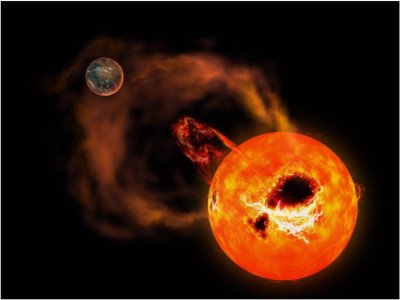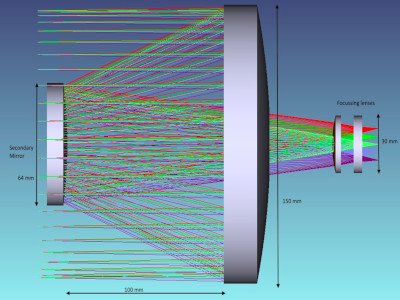Near-UV Transient Explorer
Observing the ultraviolet (UV) sky for time-variable phenomena is one of the many exciting science goals that can be achieved by a relatively small aperture telescope in space. The Near Ultraviolet Transient Explorer (NUTEx) is a wide-field (3 deg) imager with a photon-counting detector in the near-UV (NUV, 200 - 300 nm). It has a Ritchey-Chrétien telescope design with corrector lenses to enable wide-field observations while minimizing optical aberrations.
Design, assembly, qualification and calibration of this payload would form the thesis of Shubham Ghatul. A similar payload, FISAT (Far UV Imaging Satellite) is being developed to cover the far-UV (130 - 180 nm) band as well.
Science Case

Near-UV Transient Explorer (NUTEx) is designed to scan the sky and monitor transient phenomena such as:
- M-Dwarf flares
- Novae/Supernovae
Given the relatively small aperture and a large field of view, it is well suited to map the brighter regions of the sky and sources that are too bright for sensitive large telescopes.
Instrument

- Telescope: Ritchey-Chrétien
- Field of View: 3 deg.
- Aperture: 148 mm
- Observing band: 200 - 300 nm
- Detector: solar blind MCP
- Dimensions: 320 x 200 x 200 mm
- power: 8W
- Mass: 7 Kg
Preliminary Opto-mechanical design of a similar payload was a part of Ambily's PhD thesis (2019). The mechanical structure, electronics and interfaces of the payload are being redesigned to adapt for an upcoming launch opportunity, towards the end of 2025.